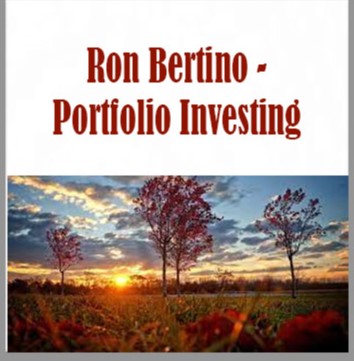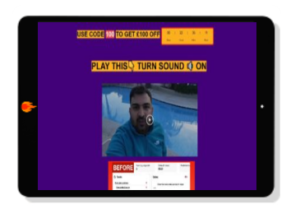The arrangement of Portfolio Investing has been thoughtfully crafted to ensure that following the suggested sequence will yield the most efficient and effective learning experience.
Who is Ron Bertino? Trading Dominion was established by Ron Bertino with the aim of offering advanced options training and education to individuals seeking to elevate their trading skills. Courses encompass algorithmic trading, advanced option trading, and diversified ETF portfolio trading. Ron is the mastermind behind the Space Trip Trade (STT) and the Black Swan Hedge (BSH), imparting knowledge on leveraging portfolio or SPAN margin for heightened returns and enhanced trading safety.
What was mentioned by Ron Bertino? My recollections take me back to 2008 – 2009, during the financial crisis, when I was employed by a large IT consulting firm.
I held a substantial sum in a 401K retirement account, and the sole method for fund management was selecting from an array of pre-structured portfolios.
At that time, like most individuals, I opted to invest in a few funds that seemed to perform well with relatively minor historical downturns.
However, over 2008 – 2009, my entire 401K retirement account plunged by approximately 45%. The diversification touted for portfolio protection against such a significant downturn appeared absent.
This was disheartening to witness, all while the fund managers continued to collect their management fees.
Portfolio Investing with Ron Bertino In General
Welcome Strategic vs. Tactical Asset Allocation Introduction to Bonds Asset Classes Hedge Funds Deceptive Nature of Data Returns
Commencement of Historical Data Linear vs. Logarithmic Scale Returns in Arithmetic and Logarithmic Prices Cumulative Arithmetic and Logarithmic Price Returns Conversion of Arithmetic and Logarithmic Returns Arithmetic vs. Geometric Mean Wealth Index Performance Charts Risk Measurement
Variance and Standard Deviation Impact of Portfolio Composition Sharpe Ratio, Calmar Ratio, Sortino Ratio, Martin Ratio Alpha and Beta Correlation and R Squared Information and Treynor Ratio Value-at-Risk and Expected Shortfall Factor Models
Capital Asset Pricing Model (CAPM) Fama French 3 Factor Model Permanent Portfolios
Equal and Value Weighting Portfolios Calculation of Portfolio Returns Evaluation of 5 Different Permanent Portfolios Moving Average Filters
M.A.F. – Single Asset M.A.F. – Portfolio-wide Modern Portfolio Theory
Introduction to MPT Correlation and the Correlation Matrix Efficient Frontier Portfolio with Minimum Variance and Mean-Variance Efficiency Rebalancing Risk-Return Graph Capital Allocation Line and Margin’s Impact on Returns Kelly Criterion – Optimal “f” Portfolio with Inverse Variance Portfolio with Risk Parity Dual Momentum
Evaluation of 6 Different Dual Momentum Portfolios Other Portfolios
Assessment of 2 Adaptive Allocation Portfolios Assessment of 2 Core-Satellite Portfolios Spreadsheets and Automation Utilizing Google Sheets technology, we create spreadsheets that illustrate the concepts taught in the course.
Spreadsheet for Stock Analysis
Integration of Historical Data from Multiple Sources Calculation of Arithmetic and Logarithmic Returns (Standard and Cumulative) Generation of Linear and Logarithmic Scale Performance Graphs Visualization of Drawdowns Calculation of Various Performance and Risk Statistics Creation of Pivot Table and Bar Graph Demonstrating Monthly Seasonal Performance Illustration of Return Frequencies and Their Normal Distribution Mapping for Skew and Kurtosis Visualization (If the above terms sound complex presently, don’t worry – by the end of the course, you’ll have a clear understanding of their meanings and functions)
Conversion Spreadsheets
One spreadsheet will take the output from an online portfolio backtesting tool we’ll use and convert it into a clean time series for more detailed analysis.
The second spreadsheet will perform a similar task, converting calendar-style returns into a clean time series suitable for further examination.
Comparison Spreadsheet
This spreadsheet will juxtapose the logarithmic returns of the clean time series data we’ve created, offering a side-by-side view of results from 2 distinct portfolios along with comparative statistics.
Automation Code using Google Apps Script
While the Portfolio Investing course aims to present concepts without delving into programming code, I’ve crafted automation code using Google Apps Script to simplify tasks mentioned earlier, specifically the conversion and comparison spreadsheets.
I refrain from explaining the Google Apps Script code in depth, but I provide the complete source code for those interested in using it as a reference for their own spreadsheet automation endeavors.
 Eric Beer – Black Friday Bundle
Eric Beer – Black Friday Bundle
 Mike Rhodes – Core Courses
Mike Rhodes – Core Courses
Ron Bertino – Portfolio Investing
Original price was: ₹165,751.00.₹5,250.00Current price is: ₹5,250.00.
-97%





